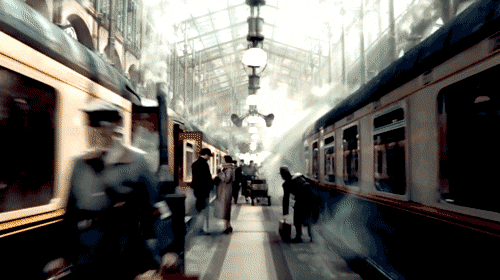T.G321

Martin Scorsese (1942-present, US)
Named the second best director of all time after Alfred Hitchcock by Total Film magazine in 2007, Scorsese grew up in Manhattan, with a Catholic-Italian family. When he was young he had asthma, and so would go to movie theatres instead of play sports, like most other boys of his age.
His mature directing style has expedited his widespread recognition as an influential Hollywood film-maker. He has made numerous successful thrillers, including Cape Fear, and The Departed.

Various unwonted devices are used in the editing of his films. The most prevalent of which include:
-
"Flashbulb cuts” – Scorsese uses the flash of a camera as a fade to white, before cutting to another shot. This produces a fluently flowing cut, and can have different implications, depending on the context. For example, in The Aviator, the abundant camera flashes from the press convey the importance of DiCaprio's character to the audience. Shot-reverse-shots from the crowd of photographers to him almost creates a sense of disorientation, as if he is about to collapse. The sound of the camera flash is usually stretched, creating a minuscule sound-bridge, to imply that his perception of time has slowed down.

-
Freeze-frames – Scorsese sometimes uses freeze-frames to introduce a new character, as the pause gives the audience time to analyse the new face, and realise the character’s importance. Scorsese also uses freeze-frames to signify an important turn of events. His use of freeze-frames is particularly exaggerated in the opening sequence of The King of Comedy, where a two-and-a-half minute long freeze-frame, showing a girl's desperate hands on car window, establishing the male character as obnoxious.

-
Slow motion – used to emphasise the drama of a situation, by giving the audience time to realise any details that could be missed if the shot were shown at normal speed, thereby increasing the tension.
-
The use of MOS (motor only shot, or motor only sync) sequences (no sound recorded whilst filming), with non-diegetic music, or a narrator. These sequences typically incorporate fast-paced editing, and rapid camera movement.
-
Pinhole zooms – These can be used to direct the viewer's attention to a particular subject, such as a character, to emphasise the subject's importance. An adulation of 1920s silent films, which used the same effect out of necessity, as putting a circular cover on the front of the camera allowed the filmmaker to control the amount of light in the shot. The effect can be seen near the beginning of Scorsese's The Departed, when an ambiguous character is introduced, in front of an unadorned building. The rest of the film focusses on the psychological conflict between the two.

Other interesting tropes of Scorsese’s films include:
-
Blonde females – objectified by the protagonist, these characters wear white in their first scene, and are shown in slow motion, which may be in reference to Hitchcock, who used a similar technique.
-
Cameos – Scorsese is occasionally seen in his films, and is heard even more so. For example, he narrates the opening scenes of Mean Streets, and The Color of Money.
-
Corrupt authority – a theme which is particularly prevalent in his more recent films, such as the policemen in The Departed.
-
Guilt – another evident theme which drives the development of Scorsese’s films. Catholicism is usually used as a method for the characters to deal with guilt, such as in Goodfellas.
-
Long tracking shots – these can be used to decrease the pace of a sequence, or to establish a character, or his actions, as important. One example is the opening shot in Hugo.
